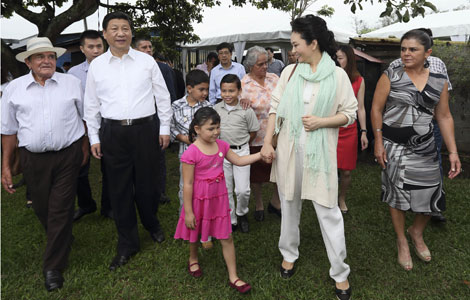Sustaining high growth
Updated: 2013-04-02 08:02
By Stephen S. Roach (China Daily)
|
||||||||
The pace of urbanization should dispel Western doubts stemming from concerns over so-called ghost cities and chronic over-investment. According to research by the global management consulting firm McKinsey & Company, with the annual influx of new urban residents totaling 15 to 20 million, China will need more than 220 large cities - at least one million inhabitants each - by 2030, up from 125 in 2010.
Moreover, because urbanization is a capital-intensive endeavor and China's capital stock per worker, a key driver of productivity growth, is still only 13 percent of the levels in the United States and Japan, China will remain a high-investment economy for years to come.
What is new today is the focus on urbanization's negative externalities, especially the thorny issues of land confiscation and environmental degradation. A well-developed "eco-city" framework was presented at this year's forum to counter both concerns. It features incentives to promote a new urbanization model, one that stresses compact land usage, mixed modes of local transportation, lighter building materials, and non-carbon energy sources.
Second, the new government is focused on strengthening the social security net as a pillar of a modern consumer society. In particular, owing to the hukou, China's antiquated household registration system, access to public services and benefits are not portable. As a result, migrant workers, an underclass numbering roughly 160 million, remain shut out of government-supported healthcare, education and social security.
Holes in the social security net have led to high and rising levels of precautionary saving, driving a wedge between increases in income and any impetus to discretionary purchasing power. Significantly, there were strong hints from senior Chinese leaders at the forum that hukou reform is now under active consideration. While that would be welcome, such efforts need to be accompanied by an expansion of benefits. China's retirement system has only about $430 billion of assets under management (national and local government social security and private-sector pensions).
Third, and possibly most important, is the quality of China's new leaders. From President Xi Jinping and Premier Li Keqiang on down, China's new leadership team is quite sophisticated in terms of analytics, risk assessment, scenario modeling, and devising innovative solutions to tough problems.
Moreover, under the organizational umbrella of the National Development and Reform Commission, the latter-day version of the old central planning apparatus, China has marshaled considerable resources into the formulation of a comprehensive and well-thought-out economic strategy.
However, it will take more than strong policy and analytical skills to deal with the tough economic challenges that lie ahead, as has been repeatedly demonstrated in the West in recent years, and there are no guarantees that China's newly installed leaders will avoid comparable pitfalls.
Vision and strategy are vital, but it will take courage and determination to tackle what is perhaps the biggest obstacle of all to any new growth strategy resistance from deeply entrenched local and provincial power blocs. To overcome these, strong words must be accompanied by bold action.
The author is a faculty member at Yale University and former Chairman of Morgan Stanley Asia, and is the author of The Next Asia. Project Syndicate.
Related readings:
Li vows quick action on reform
The path economic reform should take
Reform means maintaining stability
Reform urged for small-sum loan sector
Most Viewed
Editor's Picks

|

|

|

|

|

|
Today's Top News
Relationship 'relaunched'
Good start expected for summit
Xi, Mexican president discuss bilateral co-op
Cooperation to drive mutual growth
Chinese president arrives in Mexico for state visit
China is victim of hacking attacks
US to be largest trade partner
China joins fight against hacking
US Weekly

|

|
















